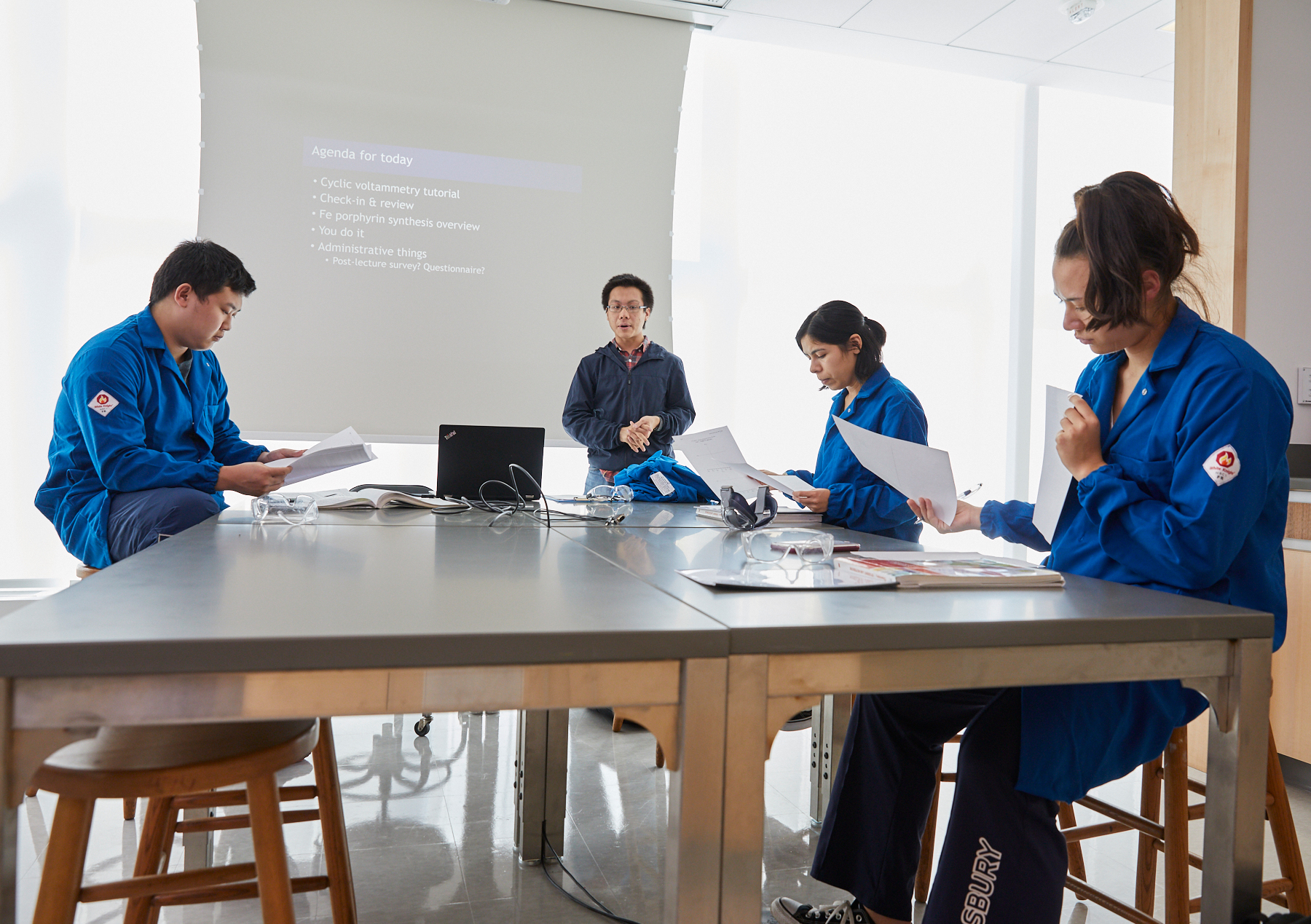
PHOTO: KEN RICHARDSON
When MIT.nano, the campus’s striking new addition dedicated to nanoscience, celebrated its grand opening this fall, among the first occupants to do science under its roof were chemistry students utilizing the new undergraduate chemistry lab facilities on the top floor. Being in this building allows URIECA module students to use state-of-the-art equipment such as an ICPMS (inductively coupled plasma mass spectrometer), an instrument that detects singly charged atoms of elements at concentrations at or below one part per trillion.
Department of Chemistry head Tim Jamison, who is the Robert R. Taylor (1892) Professor of Chemistry, and Jennifer Weisman, head of the Chemistry Education Office, explain how the new space has answered a pressing need.
How are these new chemistry labs providing a better educational opportunity for MIT’s chemistry students?
TJ: Our previous Chemistry Undergraduate Teaching Laboratories (UGTL) were well past their prime, with instrumentation that was several generations behind the times. The new UGTL in MIT.nano is state of the art. With the goal of combining a fantastic new space and innovative laboratory education, we have also undertaken an ambitious modernization of the instrumentation. We’ve made great progress, but we’re not at our goal yet. We welcome any and all support for this modernization initiative!
Read More
Do It Yourself
How many students take advantage of the department’s classes in a given year?
JW: The department currently has 67 undergraduate majors, including students majoring in Course 5 (chemistry) and 5-7, the joint chemistry and biology major. But during the 2017–18 academic year, we taught 1,249 undergraduate students from 21 different majors, as well as first-years who haven’t yet declared. With few exceptions, all MIT undergraduates must take one term of chemistry as part of the General Institute Requirements (GIRs).
Are URIECA modules for majors only? What chemistry lab opportunities are offered to non-majors?
TJ: Our chemistry majors complete all 12 modules in our URIECA curriculum, and we welcome all other students to take them too. For example, Module 1: Fundamentals of Spectroscopy, and Module 2: Synthesis of Coordination Compounds and Kinetics, require only the chemistry GIR as a prerequisite. We also offer Chemistry 5.310 for non-majors. All of our laboratory subjects are held in these new state-of-the-art laboratories—and by virtue of being located in MIT.nano, we hope that students’ awareness of nanoscience and the opportunities in that field will also be raised.